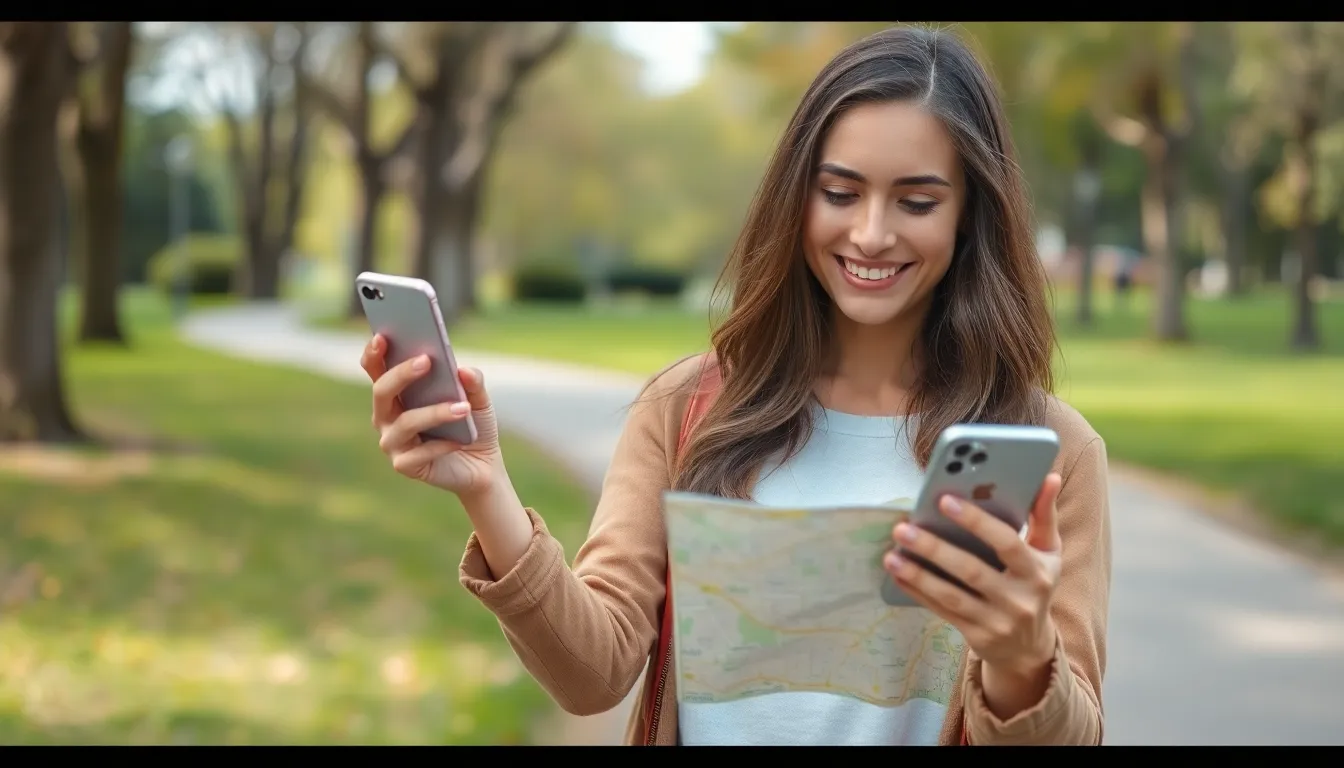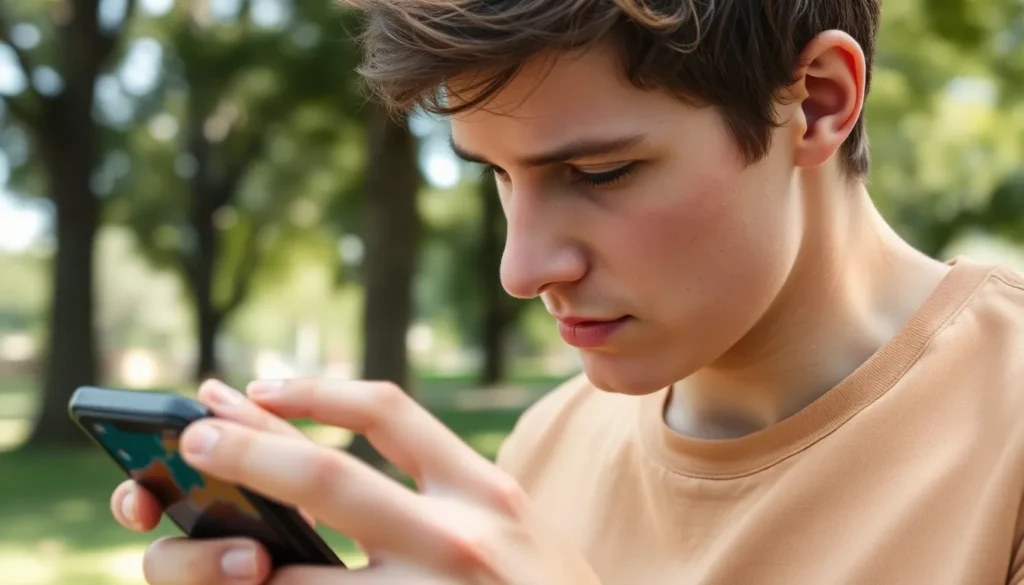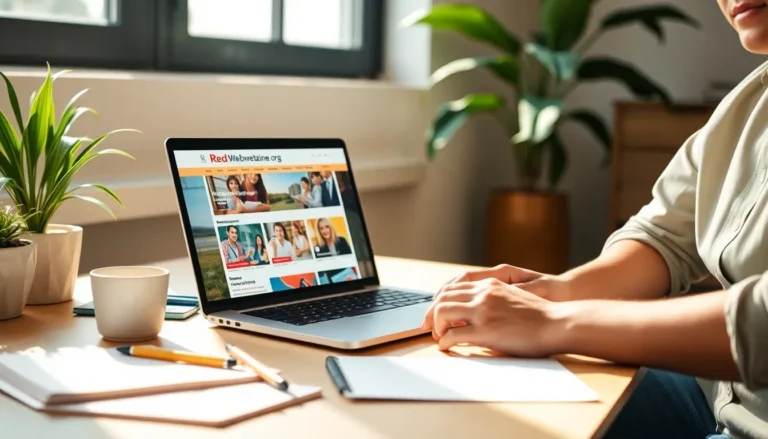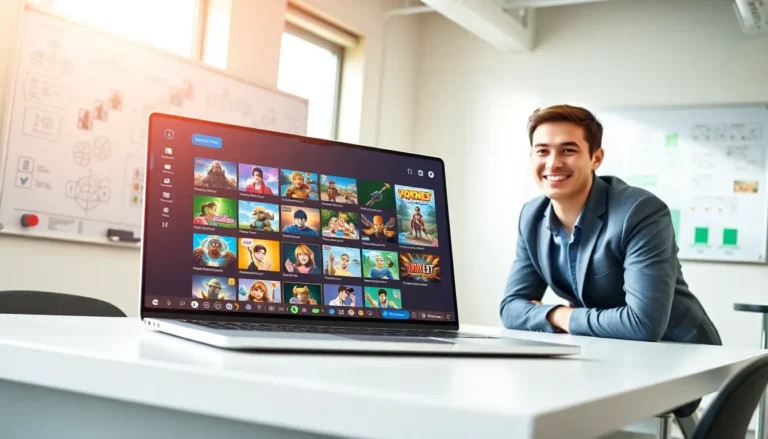Table of Contents
ToggleIn a world where Android and iPhone users often eye each other with playful rivalry, the idea of one tracking the other might sound like a plot twist from a tech thriller. But fear not—this isn’t about espionage or secret agents; it’s about unlocking the mysteries of cross-platform tracking. Whether it’s for keeping tabs on a friend’s whereabouts or ensuring a lost device finds its way home, understanding how an Android can track an iPhone opens up a treasure trove of possibilities.
Understanding Device Tracking
Device tracking establishes the location of mobile devices like iPhones and Androids. This process involves various technologies that help users locate their smartphones for practical purposes.
What Is Device Tracking?
Device tracking involves monitoring the real-time location of a smartphone, making it useful for users who wish to find lost devices or check on friends. Multiple technologies, including GPS and Wi-Fi triangulation, facilitate reliable tracking. Cloud-based services and location sharing apps enhance the accuracy of tracking, enabling users to access information from anywhere. Many apps offer a user-friendly interface for tracking, simplifying the process for everyone involved.
Types of Device Tracking
Several tracking methods cater to different user needs. GPS tracking offers precise location information, often used in navigation apps and location sharing services. Network-based tracking relies on cell towers, providing broader location estimates when GPS signals are weak. Bluetooth tracking finds devices within close range, commonly used with Bluetooth-enabled accessories. Lastly, app-based tracking uses installed applications to provide real-time location updates, offering high levels of customization for users. Each method serves distinct use cases, enhancing user experience across platforms.
How Can an Android Track an iPhone?

Tracking an iPhone using an Android device involves several efficient methods. Understanding these techniques can enhance the user experience for individuals wanting to maintain connectivity.
Using Third-Party Apps
Third-party apps play a crucial role in cross-platform tracking. Applications like Life360 and Find My Friends allow Android users to locate iPhones by sharing location details. Users install these apps on both devices, enabling real-time tracking after granting necessary permissions. An app’s effectiveness hinges on the permissions it receives, such as location sharing and background data access. Privacy controls remain important; therefore, users must ensure they have explicit consent from their friends or family when using these apps.
Utilizing Location Services
Location services offer another method for tracking an iPhone with an Android device. Both operating systems support GPS, which provides precise location data. Android users can request that the iPhone’s owner enable location services for accurate tracking. Users can access the iPhone’s location through shared services like Google Maps. When both parties have location sharing turned on, the Android user sees the iPhone’s real-time position. This functionality facilitates effective coordination for meetups or safety checks.
Limitations of Tracking
Tracking an iPhone using an Android device presents several limitations that users must consider. These obstacles often arise from privacy measures and technical inaccuracies.
Privacy Concerns
Privacy concerns significantly affect tracking capabilities. Users may not feel comfortable sharing their location due to security considerations. Third-party apps like Life360 and Find My Friends require explicit user consent, which can halt tracking if an iPhone owner refuses permission. Additionally, data privacy regulations, such as GDPR and CCPA, protect users from unauthorized tracking. Consequently, respecting these laws is essential for both parties engaged in location sharing.
Accuracy Issues
Accuracy issues can hinder effective tracking across platforms. GPS signals may weaken in urban environments or dense areas, leading to imprecise location data. Network-based tracking depends on cellular signals, which can fluctuate based on the user’s surroundings. Bluetooth tracking works effectively only within close range, limiting its practicality. Moreover, app-based tracking relies on consistent internet access, restricting effectiveness in low-connectivity situations. Users may face unexpected discrepancies in location data, impacting event coordination.
Alternative Methods of Tracking
Several alternative methods exist for tracking an iPhone using an Android device. These methods utilize built-in features and cloud-based solutions.
Using Built-in Features
Many iPhones come with built-in features that facilitate tracking. For instance, the Find My app is a powerful tool for locating lost devices. An Android user can ask an iPhone owner to share their location through this app. This feature requires enabling location services on the iPhone. Once activated, real-time tracking becomes effortless across platforms. Moreover, sharing through iMessage or location sharing settings provides additional visibility.
Cloud-Based Solutions
Cloud-based solutions offer another avenue for tracking an iPhone from an Android device. Services like Google Maps allow both Android and iPhone users to share locations seamlessly. Users can enable location sharing for specific contacts within the app. This option provides an easy solution for coordinating meetups and enhancing safety. Additionally, cloud storage solutions may include location tracking features, linking maps or GPS data to shared files. These tools ensure users can maintain connections despite device differences.
Exploring how an Android can track an iPhone opens up a world of possibilities for users on both platforms. With the right tools and permissions in place tracking can enhance safety and facilitate better connections among friends and family.
While privacy concerns and technical limitations exist users can still leverage various apps and services for effective location sharing. These solutions not only help in finding lost devices but also streamline coordination for meetups.
By understanding the methods available Android users can confidently navigate the cross-platform tracking landscape ensuring they stay connected regardless of device differences.





